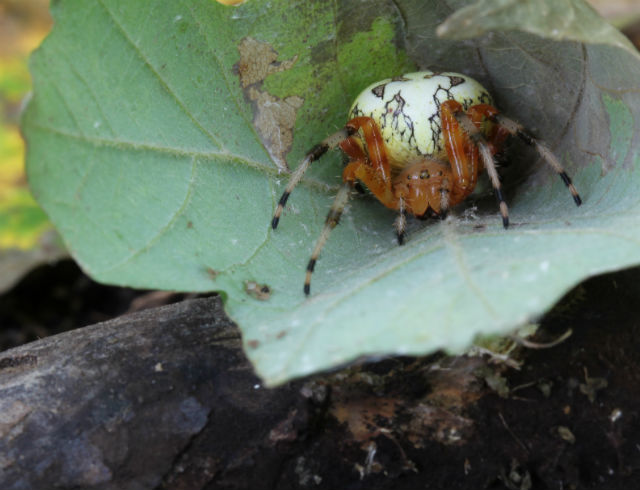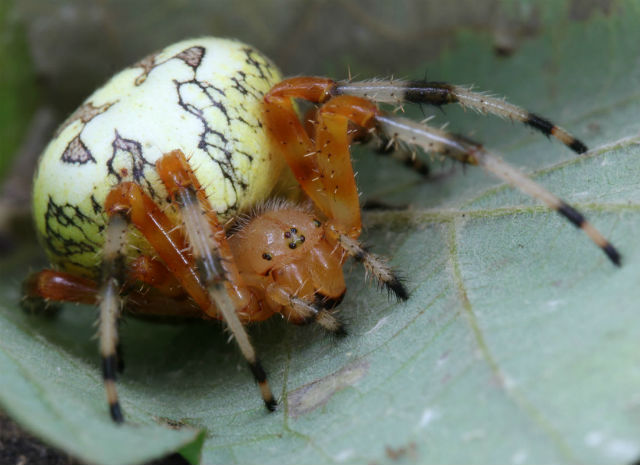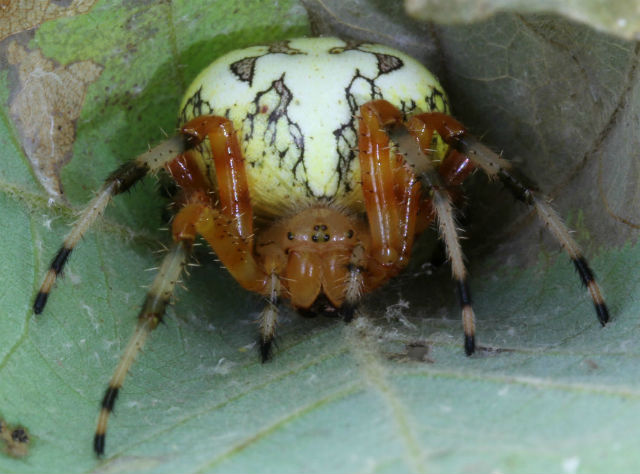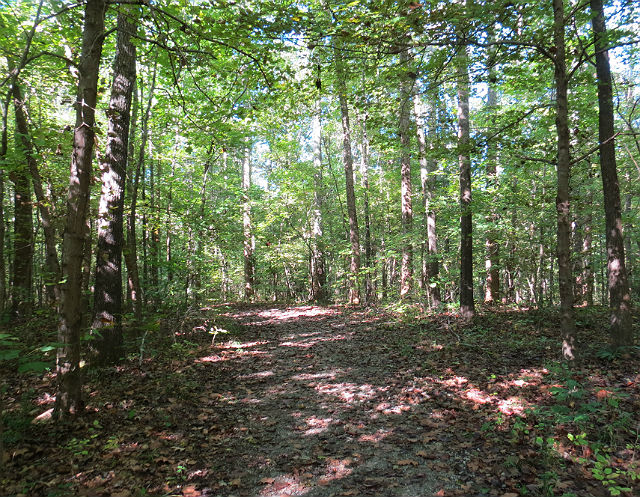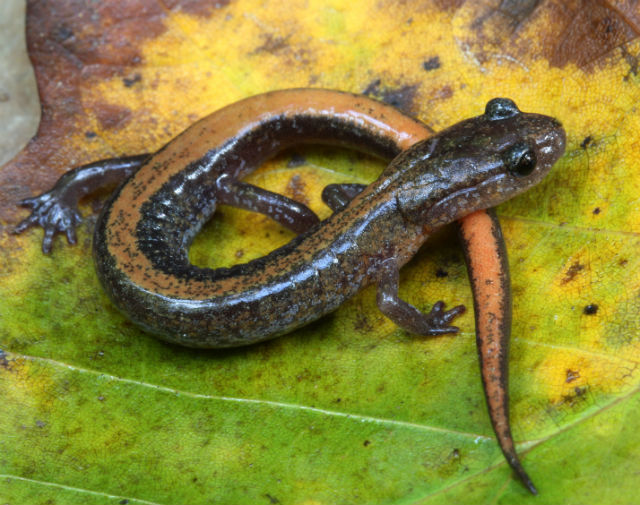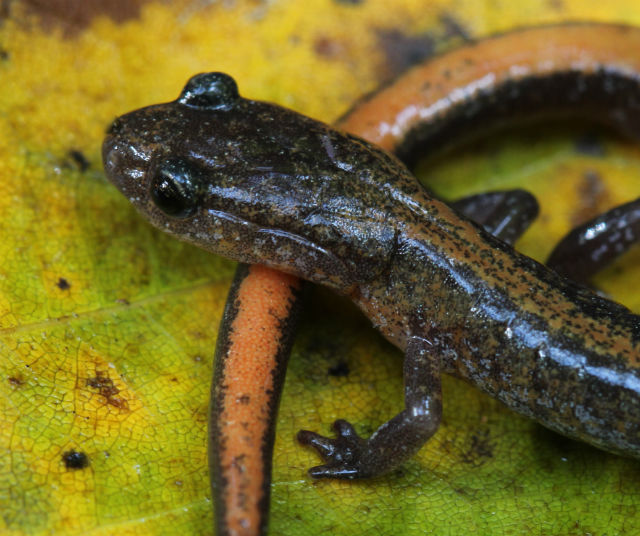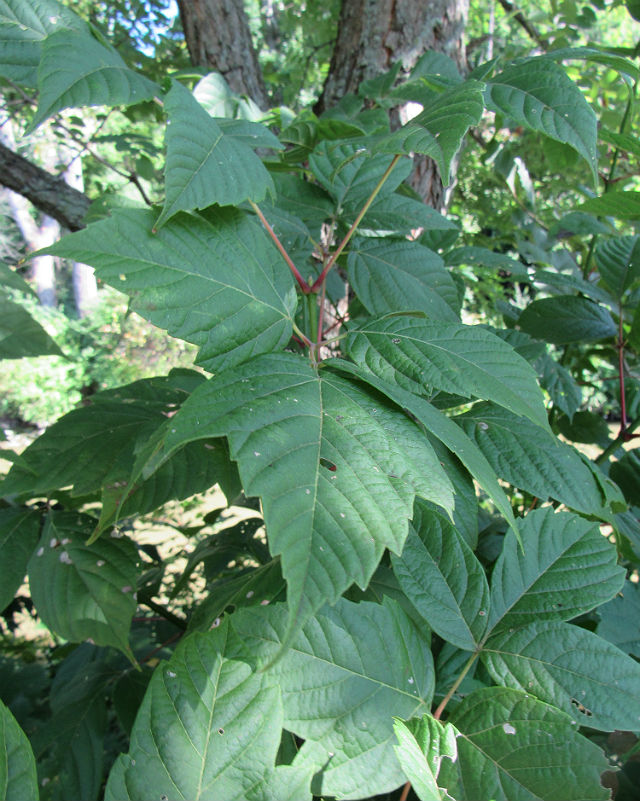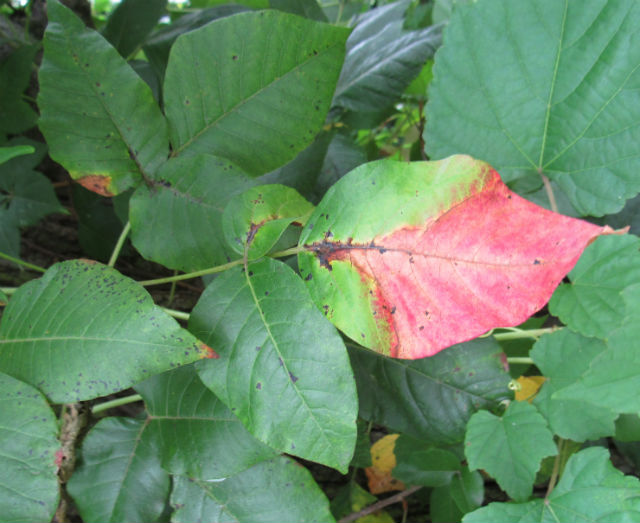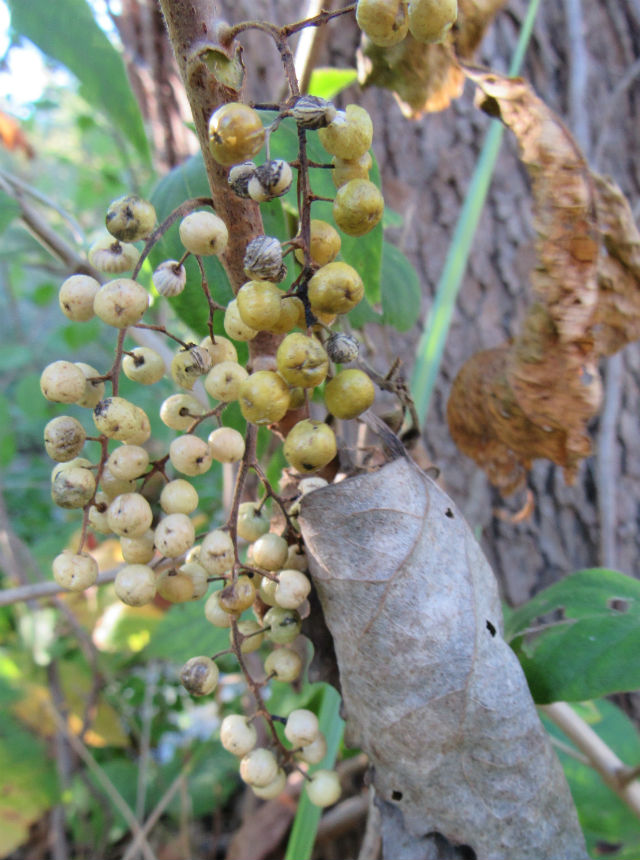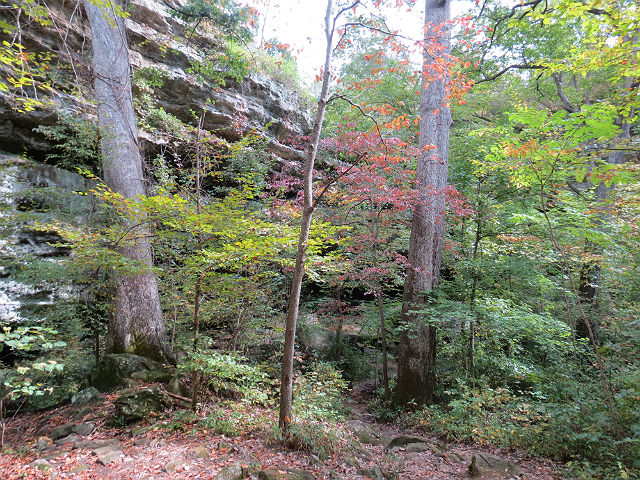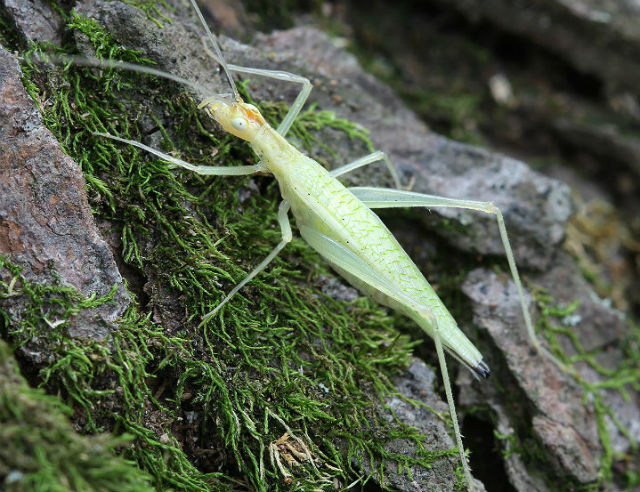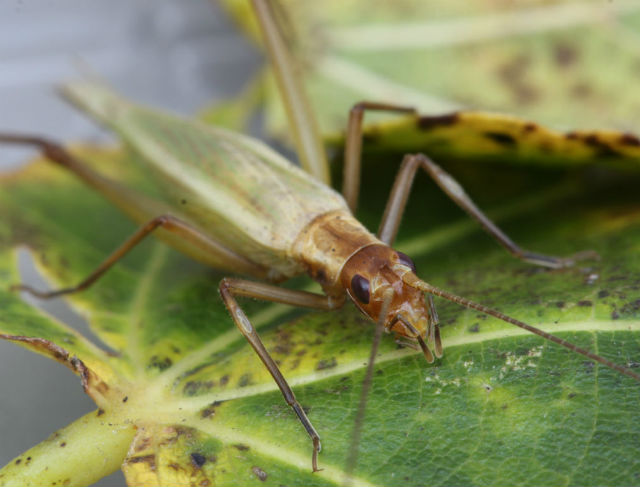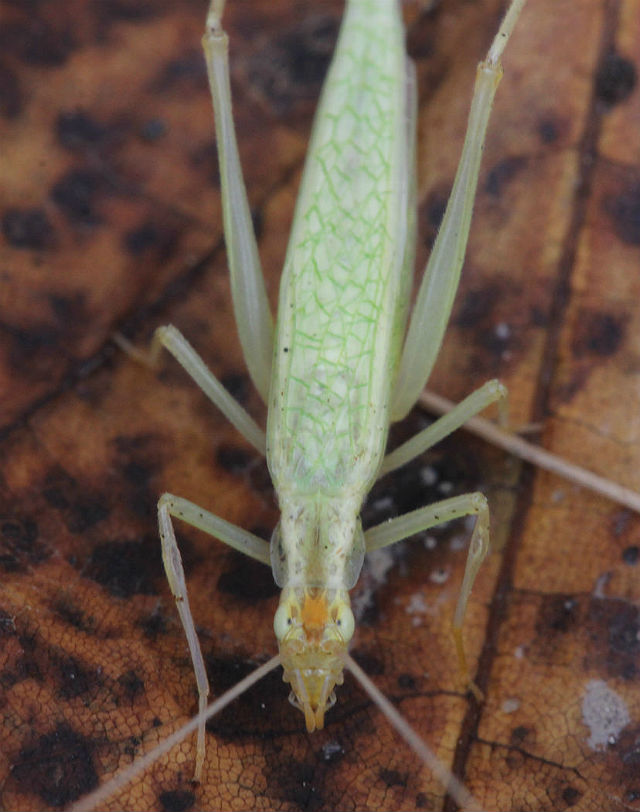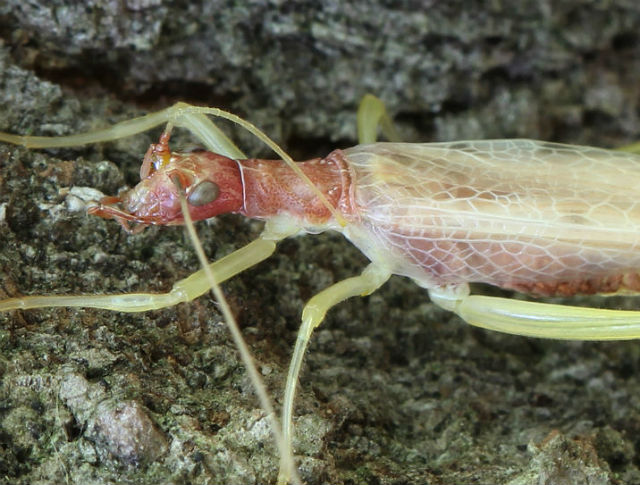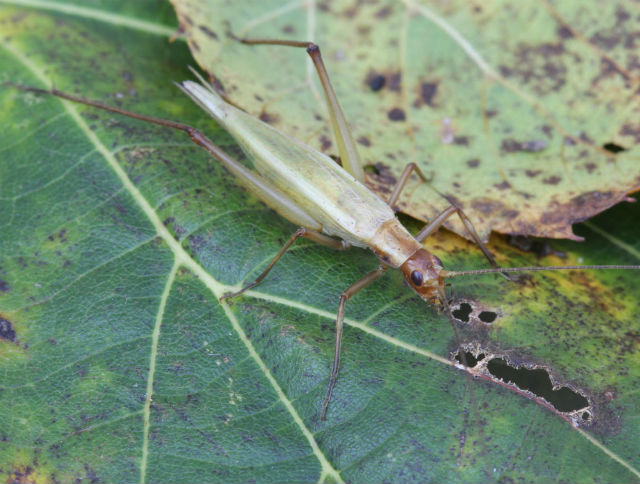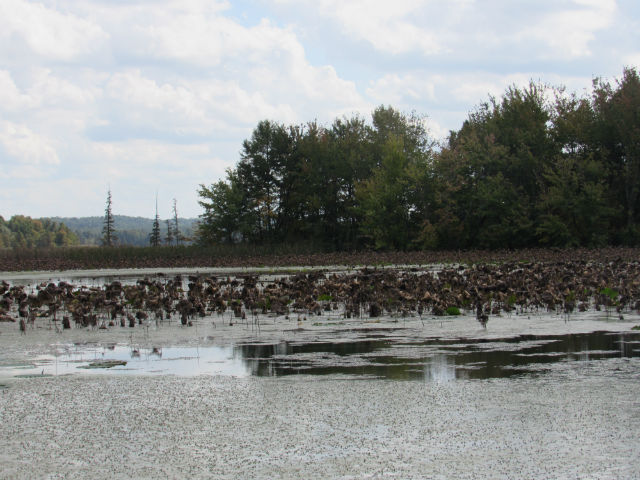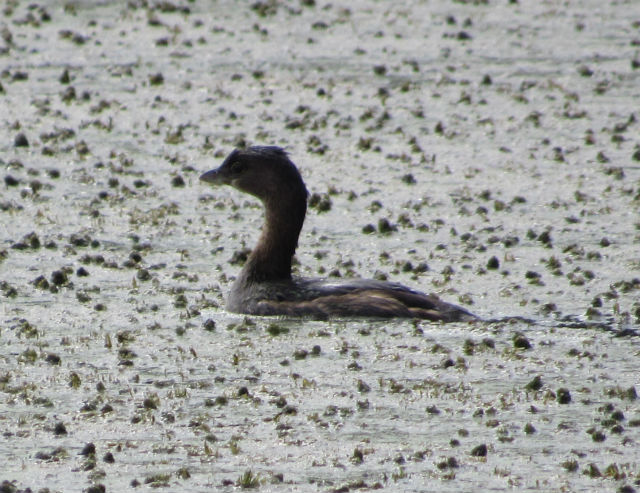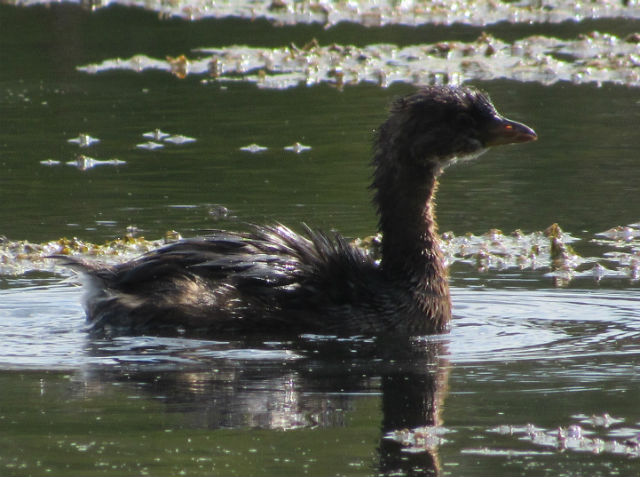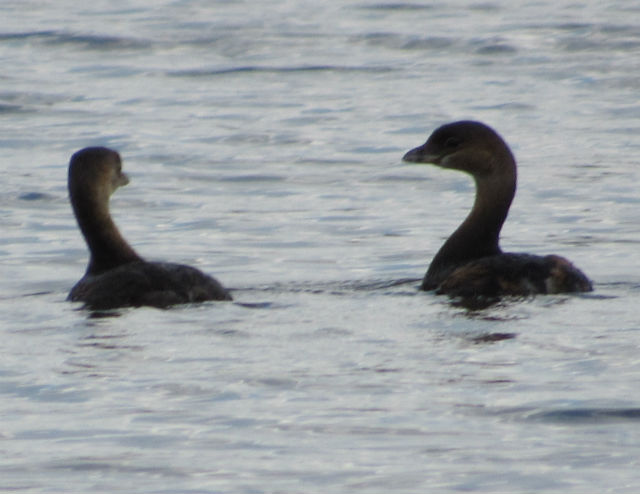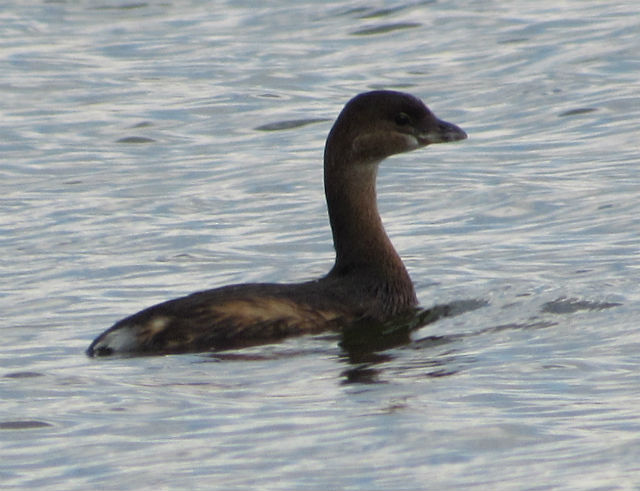While hiking along the edge of a swamp in southern Illinois, I came across this very cool creature. This species is impressive in both size and pattern. The unique marbled pattern of colors on the abdomen, as well its orange head and black and white legs make for visually stunning arachnid.
This spider tends to build its web in trees and shrubs in moist, wooded settings. Unlike most other orbweavers in its genus, it hides in a silken retreat near its web. The retreat is made of leaves folded over and held together with silk. One strand of silk extends all the way the retreat. If it vibrates, the spider knows it has caught something.
The “orbweaver” part of the name comes from its web, which the spider weaves to form a circular, or orb-like grid. The fragile web is easily damaged, so the spider spends time each day repairing it, regularly rebuilding it entirely.
The Marbled Orbweaver often falls to the ground if it senses it is in danger. It is sometimes also called the Pumpkin Spider because of its resemblance to orange pumpkin.


